The Ultimate Guide to Practical Cold Weather Clothing
This post may contain affiliate links. Read my full disclosure here.
Cold weather clothes are a must for us here in Wisconsin. Recent winters have been milder, but we’ve had past years with weeks of extreme cold weather, well below zero. From wicking layers to windshells, we’ll help you pick the right cold weather clothes to stay toasty, even in extreme cold.
In this article, we’ll answer common questions about warm clothes and dressing for different conditions. Then we’ll get into the four layers of cold weather clothing, and our picks for those layers. We also talk about winter gear, including socks, underwear, boots, hats, gloves, and pants.
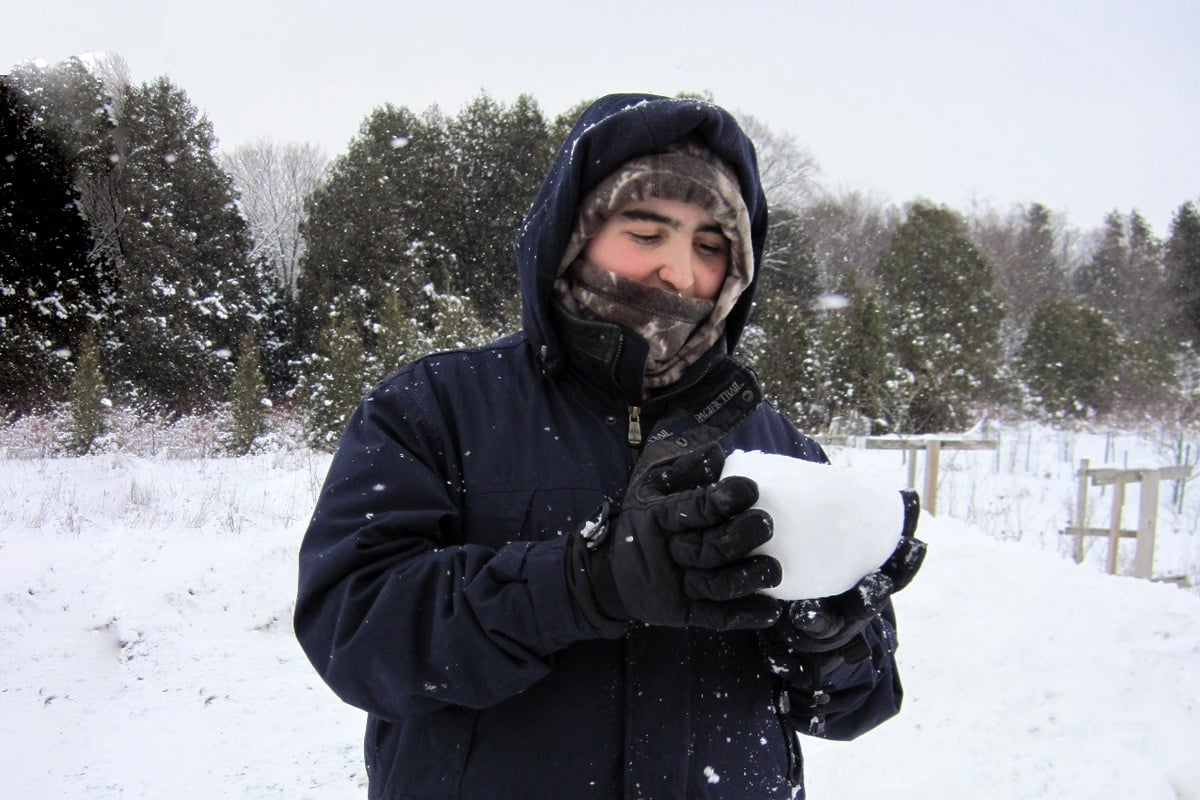
Table of Contents
- Cold Weather Clothes – The Basics
- Which materials provide warmth even when wet?
- The 4 Layers of Extreme Cold Weather Clothing (ECW)
- Cold Weather Pants
- Cold Weather Head Protection
- Colder than -30°F (-34°C)(Extreme Cold/Blizzard)
- Cold Weather Clothing – Gloves and Mittens
- Winter Socks and Slippers
- Cold Weather Boots
- What are Your “Go to” Winter Clothes?
- Related Articles
Cold Weather Clothes – The Basics
In general, you want to get insulation/protection between you and the environment. Layers work well, because you can add or remove them to avoid sweating. For instance, a wind shell combined with a light mid layer may work better than one heavy insulation layer.
Why is sweat a problem? Some materials lose their insulation value when wet. Cold + damp = higher risk of hypothermia, which may be life threatening. Moisture on the skin will result in cooling which is great if it is hot out, but really bad if its 30 below zero.
Find out what “normal” conditions are for your area. Then make sure you have winter clothes that will protect you to that temp, and at least ten degrees lower. (Recent winters are breaking records in many areas.)
Plan your winter wardrobe for conditions, your cold tolerance, and your activity level. “Cold weather clothes” is a relative term. Calm and temps of 20°F(-6°C) feels a lot different than windy and -20°F(-28°C). What feels a “little chilly” to northern dwellers could be frigid to southerners.
Which materials provide warmth even when wet?
Wool keeps you warm, even when wet, and is naturally odor resistant. It wicks moisture, though not quite as well as synthetics. Wool is also durable, and can absorb up to 30% of its weight in moisture without feeling damp.
My husband is such a fan of wool socks that he wears them year round. My youngest son has joined the wool fan club, too. These are Duncan’s favorite wool socks.
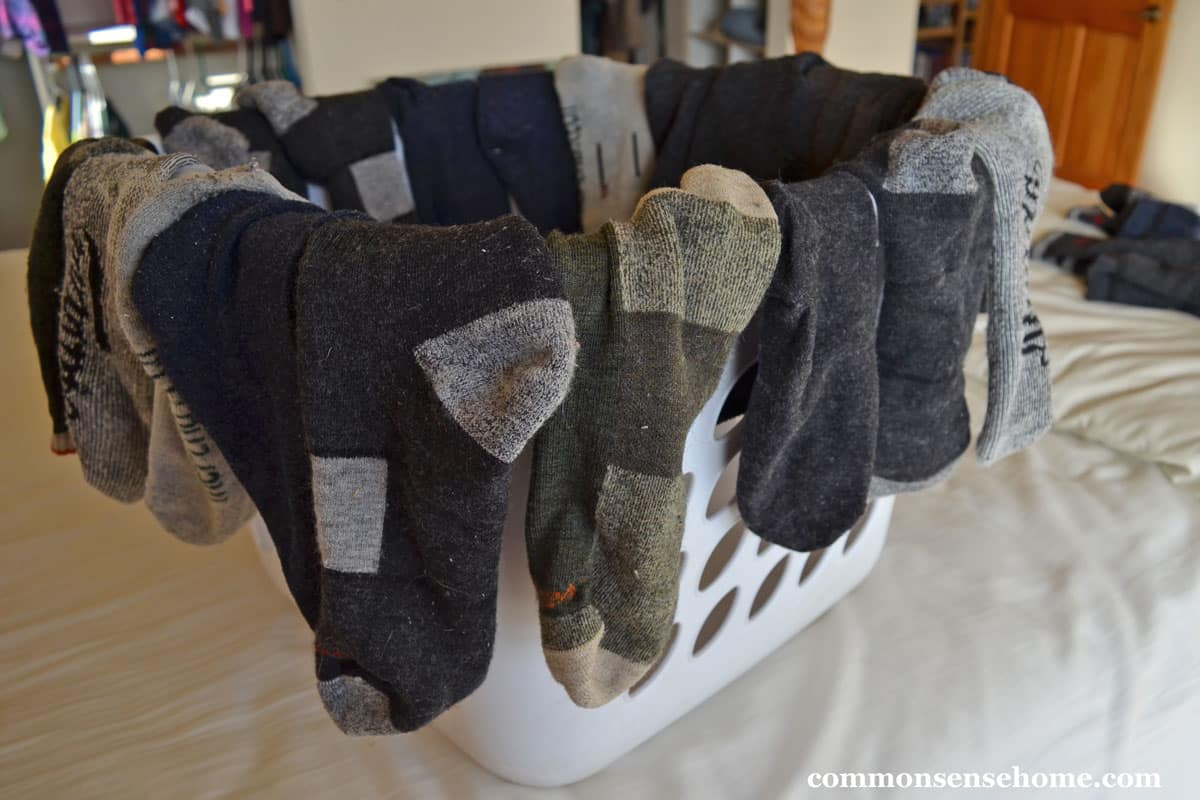
If it’s not too cold and you are less active, silk is a good natural fiber option. It does not retain odors, and is moderately wicking. A thin layer of silk can fit under almost any garment. Silk is less durable than wool.
Synthetic fabrics like polyester and polypropylene wick moisture away and insulate even when wet.
Cotton is a poor choice as a base layer, because it absorbs water and holds the water next to your skin. Save the cotton for warmer weather, or as a part of the outfit not intended to protect you from the weather.
One of our readers, an avid outdoorsman, notes:
“Super fine merino sheep wool and silk – worn correctly – out perform synthetics for extended wear. Wool is lousy in wind, but is such a luxurious warmth when worn under a wind barrier outer. Silk is surprisingly warm for its thinness – AND NEITHER SMELL!
I have worn them every day for weeks when hiking and no pong. They got a fair bit icky/sticky by the end, though. Synthetics can stink after just 1 day of use.
Then there’s angora: yak wool: musk ox & Possum fur/merino mix (from Kiwi land). These are all just gorgeously warm. Even hemp can be okay. Synthetic materials require less TLC.”
The 4 Layers of Extreme Cold Weather Clothing (ECW)
The key to cold weather clothing comfort is layers, whether it’s slightly chilly or dangerously cold. Even if you’re not battling the bone chilling temperatures of the South Pole, you can mix and match these winter clothing layers for comfort.
These four layers of Extreme Cold Weather Clothing are adapted from the Field Manual for the U.S. Antarctic Program. For more details on layering extreme cold weather gear, see: US ARMY – SUSTAINING HEALTH & PERFORMANCE IN COLD WEATHER OPERATIONS.
1. Long Underwear
Your first layer should be your long underwear. It should fit snugly against your skin and be made of a nonabsorbent material. This layer works by wicking away water and keeping your skin dry.
Water is 25X more conductive than air. If your sweat, slush, cow slobber or anything else stays trapped next to your skin, the heat of your body is channeled through that moisture away from you.
(Personal note – I have thick calves and broad shoulders, so I usually buy men’s long underwear, as the women’s tends to be cut skimpy.)
Some long underwear options:
- Silk longjohns
- Wool long underwear
- FX Womens MAXHEAT Fleece Long Johns Thermal Underwear
- TSLA Blank Men’s Microfiber Fleece Lined Top & Bottom Set
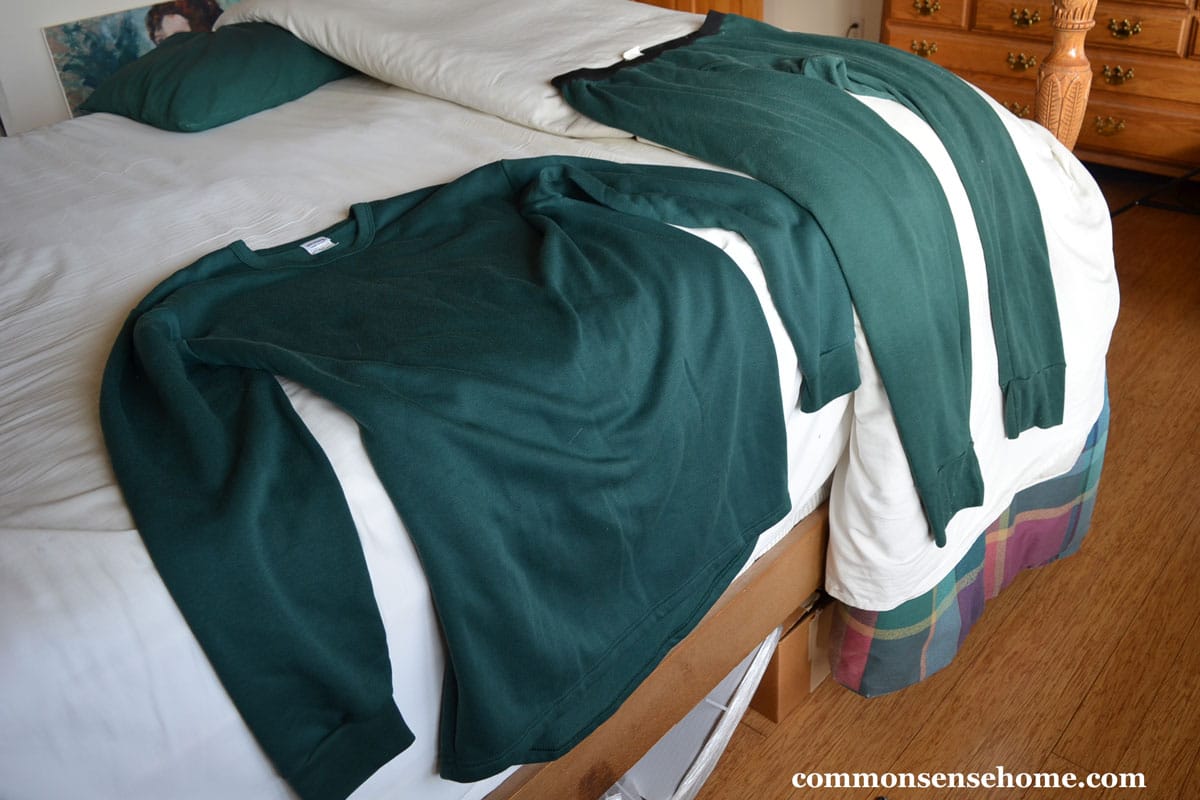
2. Middle Layers
The next layers are important because they serve to absorb the moisture out of your long underwear and transport it to the environment through evaporation.
Look for synthetics, angora, or wool. This layer includes warm clothes like long sleeved fitted shirts, flannel shirts, sweaters, and thick skirts or trousers.
Pay close attention to the fit, as the mid layers work by trapping air and preventing it from circulating and carrying away your body heat. In general you want them fitted, but not tight. Exterior layers should also be fitted but not tight. You don’t want a draft blowing up your parka or under your shirt to give you a chill.
Some mid layer options include:
3. Insulation Layer
Thickness is warmth, because of the air trapped in the fabric. If you are holding still or it’s extremely cold, choose an outer garment with several inches of loft. Down, Polarguard, Holofill, Thinsulate, and Primaloft are the types of insulation that the USAP uses in the ECW gear.
Some Down Coat Options:
- Women’s Thickened Down Jacket
- Ultra-Lightweight Hooded Packable Down Puffer Coat with Travel Bag (good emergency jacket)
- Columbia Men’s Lone Fir 650 Turbodown Hooded Jacket
- Womens: Canada Goose Kensington Parka $$$$$
Down loses most of its loft when wet and takes a long time to dry, so you must be careful to avoid getting down garments wet.
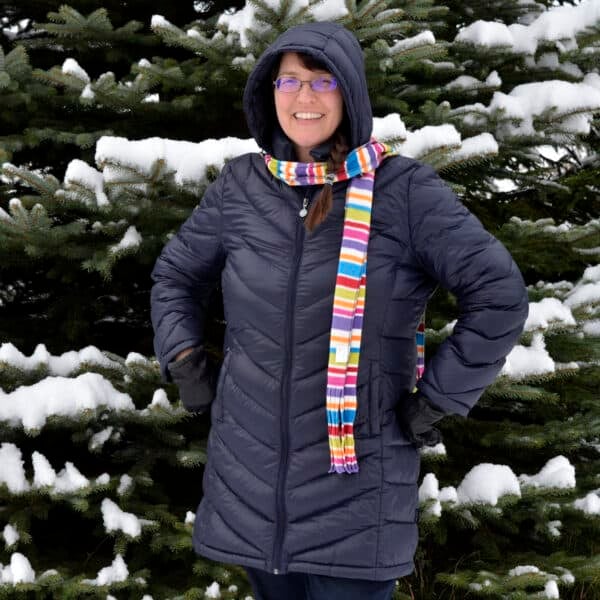
Are Puffer Jackets Warm?
I find my puffer jacker comfortable to wear in 40 to 20 degree F weather. Once it drops into the teens (or lower), I switch to a heavier jacket, especially if it’s windy. If I’m running errands where I’m going in and out of buildings, the puffer jacket is okay in colder temps.
Parka options with synthetic insulation:
- Women’s Plus Size Knee-Length Arctic Parka
- Lowest priced general use parka Rothco Nylon N3B (newer style military parka) sizes run large. Nylon Poly Shell. Long, below waist.
- Good general use parka – Rothco Cotton N3B (older style military parka) sizes run large. August wore this in the military in -20f (-40f wind chill on the flight-line and was warm). This one has the older cotton exterior. The nylon one is better if you are likely to get wet.
- Mid priced more stylish version of the N3b. The Alpha industries N3b also comes in slim, regular and womens.
- Expensive stylish Northface McMurdo Parka III. Warm but not as warm as the ones above but more stylish.
4. Shell Layer (Outer layer)
A windshell is a critical part of your cold weather clothing. Studies conducted by Recreational Equipment Co-Op show that in still air, windshells worn over any garment can add up to 25°F of warmth. In windy conditions, windshells can increase warmth by 50°F or more.
Personnel working near McMurdo get a windshell that is windproof but not waterproof. Because of the dry climate, fabrics without water resistance are superior, because they allow your perspiration to escape more easily.
Personnel working in the Peninsula area get a waterproof/breathable windshell because of the potentially wet conditions encountered there.
Some windshell options:
- Little Donkey Men’s Waterproof Rain Jacket Outdoor Lightweight Rain Shell
- Outdoor Research Men’s Apollo Jacket
- Women’s Scopi Windshell Jacket
Cold Weather Pants
For working outside in cold, dry conditions, flannel lined jeans are a great option. For extreme cold, add layers such as insulated overalls or snowmobile bibs.
My sons and husband are the same size, so sometimes my husband finds his lined jeans missing from the closet. (It might be time to get our sons their own pairs for Christmas…).
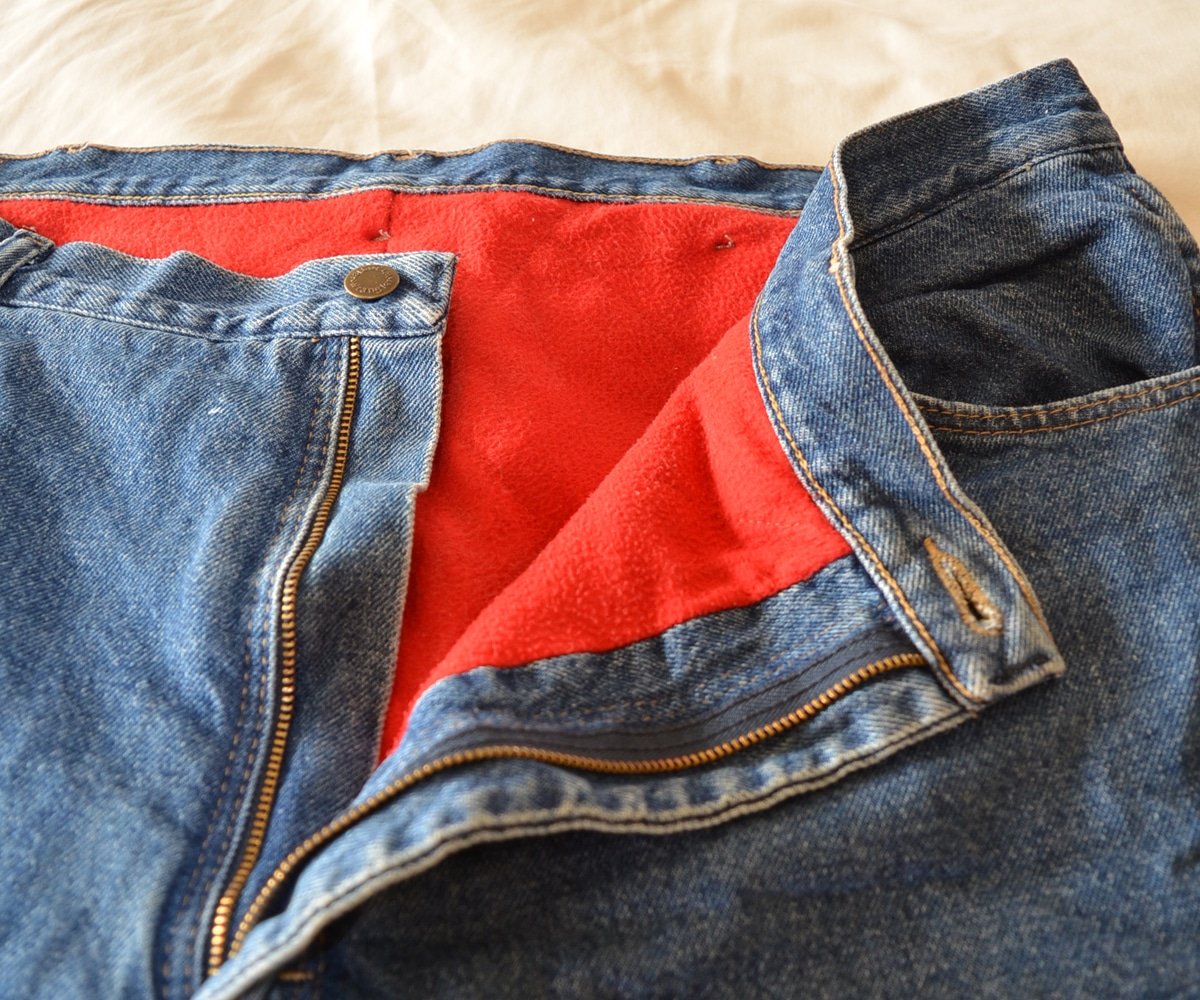
Flannel lined jeans are great for 1 to 3 hours of light use. The problem is that they will hold moisture. For any extended use, activity levels that get you sweaty, or high moisture conditions, the overalls or bibs are a better choice.
Some lined jean options include:
Would you like to save this?
- Carhartt Men’s Relaxed Fit Straight Leg Flannel Lined
- LEE Men’s Fleece and Flannel Lined Relaxed-Fit Straight-Leg Jeans
- Dickies Women’s Flannel Lined Jean
Cold Weather Head Protection
While the old adage that you lose 40% of your heat through your head isn’t accurate. (The head is similar to other areas of the body for heat loss per square inch.) That said, you still need cold weather clothing that protects your head and face in winter.
There are dozens of options to protect your head from cold conditions, and layering is a good idea in extreme cold. You can wear a “ski mask” or balaclava with an aviator hat or with a full parka snorkel hood. Wool and silk remain good 1st layers, since they keep you warm even when damp with sweat.
When August was in the military in Duluth Minnesota with the air temp of -22°F with about -40°F wind-chill. For a 6 hour flight-line guard shift, the bunny boots, parka and dual layer gloves (wool and leather) were critical to keeping warm. That same gear in +5°F would overheat you.
Any well rated N3B style parka will protect from extreme cold. The N3B style is based on a military parka, and has an integrated fur lined snorkel hood. We find the fur snorkel much warmer and more comfortable than the face mask options – if the loss of peripheral vision is acceptable.
Note: A full parka with a snorkel hood will be too warm unless the temperature is below -10°F (-23°C). For extreme cold, -30°F (-34°C) and below, layer as noted above, with the parka as the shell. Use a ski-mask or balaclava under the parka hood.
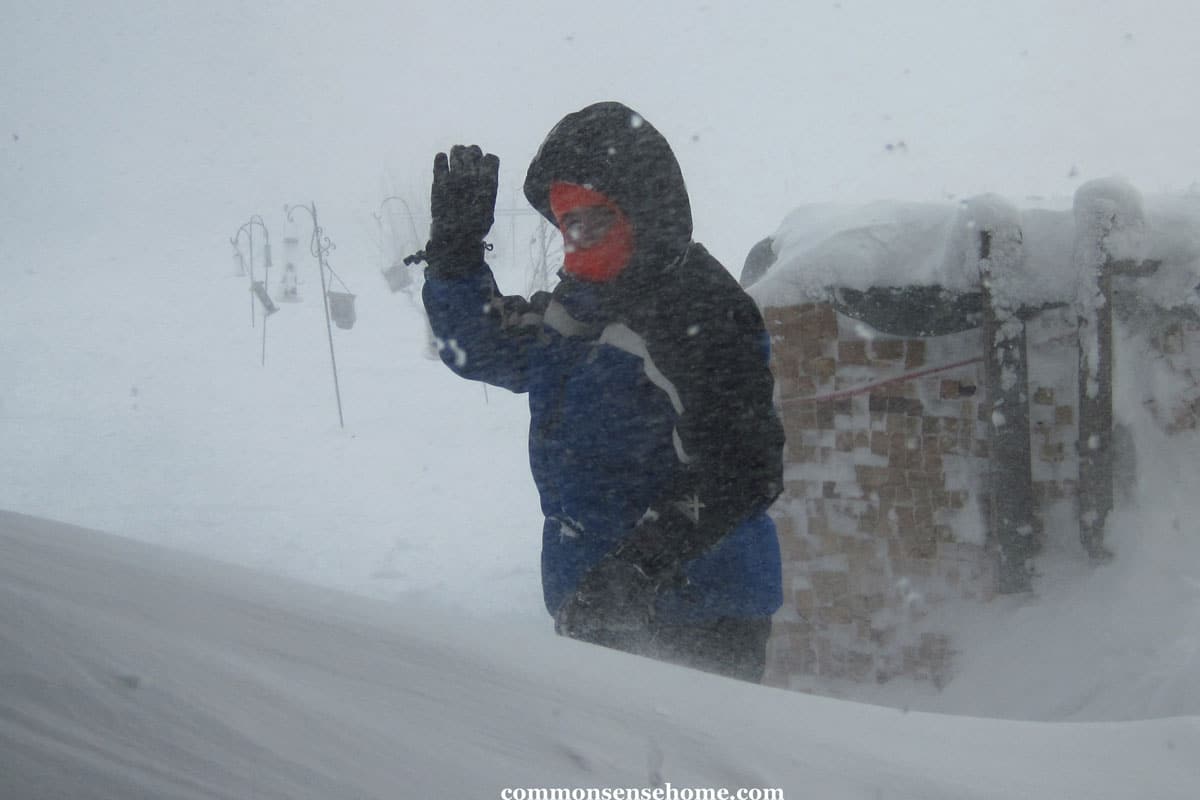
Colder than -30°F (-34°C)(Extreme Cold/Blizzard)
Combine headwear with a fur lined snorkel integrated with a parka, and possibly an under layer balaclava. As an outer shell with the base layers, parkas will keep you warm well to -40°F (-40°C) or lower if you are active. For parkas, get a size larger if you plan to wear a layer under it.
- Best – Aviator hat with face mask (like a ski mask/balaclava)
- Good – Balaclava with outer shell hood
- Good – Real Fur Aviator Hat
0°F to -30°F (Very Cold)
- BEST- Real Fur Aviator Hat
- BEST- Balaclava
- Good- Merino Wool Beanie (stocking cap)
32°F to 0°F (cold)
- BEST – Wool Beanie (stocking cap)
- Good – Beanie (stocking cap)
Try different types of headgear on at your local sporting goods location if possible, so you have a feel for how different styles of headgear feel. Hooded jackets provide an extra layer of protection when winter gets bitter cold. You may also want to have wrap around sunglasses for dealing with snow glare.
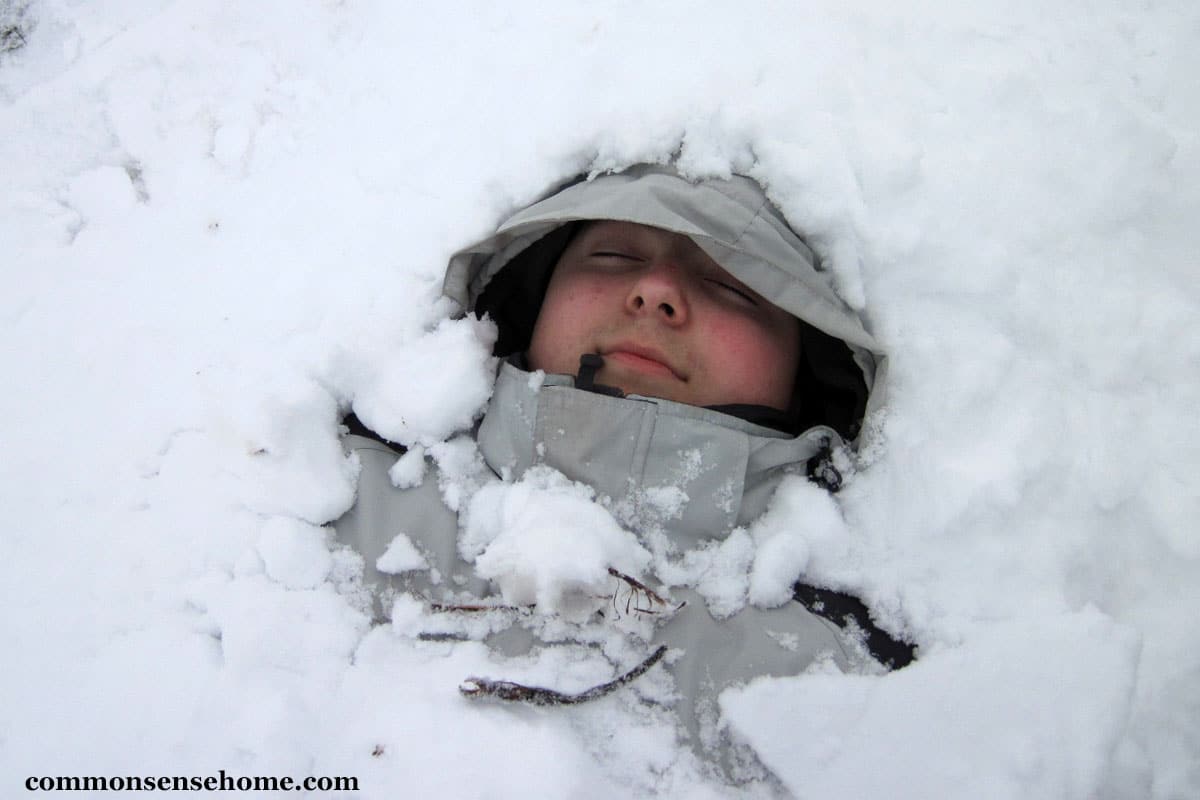
Cold Weather Clothing – Gloves and Mittens
For work that must be done without heavy gloves or mittens (for dexterity), use poly glove liners. Fingerless alpaca wool gloves might also work. Alpaca wool is known for its warmth.
Gloves with pockets for hand warmers add heat without the bulk of the heavy duty gloves.
For extreme cold, you will want mittens with warm liners, so they will need to be large enough for your gloved hand.
Some options include:
- Heat Factory Gloves with Pop-Top Mittens, with Hand Heat Warmer Pockets, Blaze
- eMitt Convertible Flip-top Mittens
-30°F and lower
- Hank’s Surplus Military Camouflage Arctic Cold Weather Leather Mittens & Wool Liners
- Silk Liner
- Black Diamond Mercury Mitts Cold Weather Mittens
-10°F to -30°F
0° to -10°F
Northstar Mens Deerskin Buttersoft
32°F to 0°F
Dachstein Woolwear Extreme Warm Boiled Wool Alpine Mittens
Winter Socks and Slippers
Keep your feet warm inside with a good pair of slippers. A reader recommended MukLuk slippers, saying that she’s be very happy with the ones she received as a gift. (Most used Christmas gift ever.) MukLuks come in several different styles, including:
- MUK LUKS Women’s Magdelena Slipper, which cover the foot
- Women’s Tall Fleece-Lined Slipper Boot, which come further up the leg
- Muk Luks Men’s Slipper, which sits low on the ankle
Another reader recommended Warrior Alpaca Socks, saying that they kept her feet warm even though she has Raynaud’s phenomenon. Carhartt synthetic/wool blend socks are durable and breathe well. Arctic Extreme socks are fully synthetic and very well reviewed on Amazon.
See also: “Emergency Underwear and Socks ” and “No More Cold Feet in Bed“.
Cold Weather Boots
No cold weather clothing outfit is complete without boots. Get boots that are a size larger than your regular shoe size to accommodate thicker socks or boot liners. If you plan to double layer socks, you might need two sizes larger. If possible, try on similar boots with the socks you plan to wear outside.
Amazon is good with size swaps for Baffin, so keep that in mind if you find it too large or too small. For 0°F to -10°F, any decent boots that will fit your feet while wearing thick wool socks will keep you warm enough – for extreme cold weather gear, see below.
All Day -40°F or colder
White Military Bunny Boots —The white ones are theoretically good to -60°F. The black ones are NOT the same. We could not find the white ones except in military surplus stores, so you will need to search.
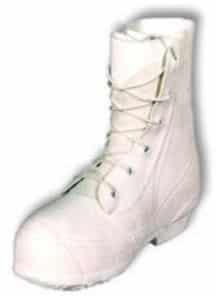
All Day -20°F to -40°F
All Day -10°F to -20°F
Black Military Bunny Combat Winter Boots (these are not the same as the white ones – more in the -10°F to -20°F range)
The warmest boots August ever wore were the White Military Bunny boots or Mickey Mouse boots when he was in the USAF. We can’t find them any more.
What are Your “Go to” Winter Clothes?
What’s your favorite cold weather gear? We’d love to hear from you, or offer suggestions if you need help dealing with the cold.
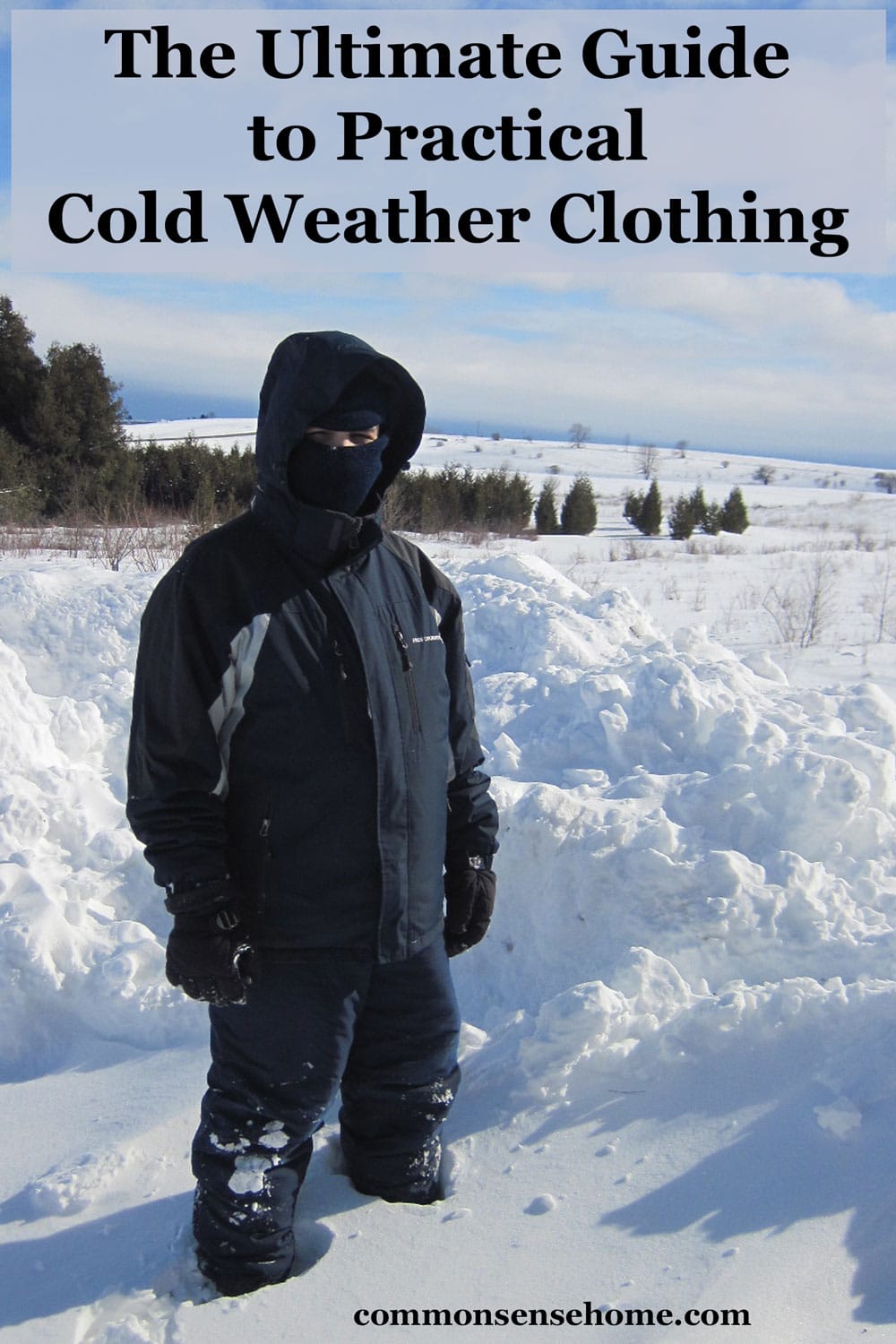
Related Articles

This article is by Laurie Neverman. She has a BS in Math/Physics and MS in Mechanical Engineering with an emphasis in renewable energy. Laurie and her family live in a “concrete bunker” (ICF home) with a permaculture food forest, greenhouses, and three types of solar. They “walk the talk” of preparedness by living a more self-reliant lifestyle.
Last updated in 2023.

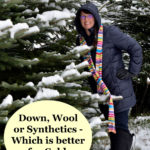
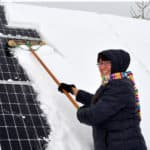
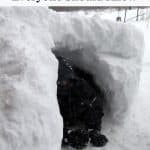
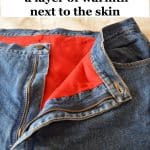
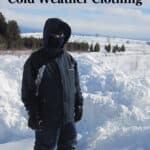



Hi, I’m so glad I saw your article. My husband and I are going to Yellowstone in 2 weeks and I’m still confused as to what to pack and wear. My first time there and I have zero knowledge about cold and clothing. Well, a little more now that I’ve read your article. ☺️ Where we’ll be, the average temps are 51 and 28 degrees. I’m counting on the lower temps just to be safe because we’re going to be out in the early mornings and evenings. Some of the clothing or fabrics/material you mentioned for these temps, are they easily found? I’m getting into a time crunch and starting to get stressed. Thanks so much for any more help and advice you can give me.
In our area (northeast Wisconsin) stores tend to stock cold weather gear more seasonally (from September through February, give or take). If it’s that cold where you are going, the stores may have cold weather gear year round, but if it’s a tourist area, prices may be higher.
You can usually buy item online year round. There are some links in the post to related amazon products, or you can search your favorite retailer.
I don’t know what temperatures you are used to regularly. That makes a big difference on comfort levels. For us, since we live in a cold climate and work outside regularly, 51 degrees is light jacket weather. 28 is light winter jacket, or t-shirt, flannel shirt, and light jacket. You may want a heavier jacket if you are not used to the cold, especially if you will be outside for long periods.
Layers work best for comfort. How long are you staying? Is it possible that you may be able to borrow a few things from friends or family? Warm boots are a top priority for me, living where we do, but a good pair can be expensive. A pair of hiking boots combined with some wool socks would be something that you could use for the trip and be more likely to use again later.
Dear Sirs, as we are having to live with lower temperatures in the house’s due to costs, have you got suitable clothes for individuals who live on their own and do not move about much?
Thank you
Robert
Wear layers of clothing. We don’t directly sell clothing on this website. I’d suggest using layers such as long underwear, main clothing, sweaters, turtlenecks, jackets, fingerless gloves so your hands stay warmer but you can still use them. If it is very chilly indoors, you’ll need to dress for outside while inside.
Need to know how to relieve oneself wearing layers of heavy winter clothing
Generally folks take off some of the layers of heavy winter clothing, though I suppose one could resort to adult diapers in a pinch.
Note: Be careful if you are wearing hooded coveralls and have to take an emergency poop in the woods and try to drop them around your ankles. One fellow did this years ago in a hunting party with my brother, and ended up pooping in his hood.
My family lived in northern climates for many years. Your article here included so many familiar things I had found beneficial. Enjoyed this and the added comments. Many practical and wise suggestions. A few ideas from us: One layer of lower extremity clothing goes over the longjohns and is tucked inside the boots. Another layer of clothing hangs over the boots to help prevent snow from seeping into your boots. Come autumn a box of course sand, dirt, cat litter mix, etc. was put into the trunk of our vehicle along with a reasonably sized shovel. These are helpful if there is a problem with the vehicle in the snow. I packed a box of assorted non-perishable foods and kept it in the trunk until spring. Cans of tuna, salmon, chicken, dried fruit and nuts, and crackers. Some drinks were in freezer bags in case they froze. Served us well many times.
Hi Roxy!
Thanks for sharing your tips. We have something similar in the winter car kit post.
One note about the cat litter – the clay litter makes things worse, too slippery. I tried it once when my husband couldn’t get out of our driveway. Slimy mess. We use a walnut shell based litter now, and that gets the job done. Wood ashes work great, too.
Apart from the type of clothes you wear, you can also greatly improve their performance with the way you wear them. Make sure that all the openings at neck, wrists, waist and ankles are close fitting, but not tight. For a jacket a knitted wrist cuff sewn into the end of the sleeve makes a huge difference. So does some wrist warmers to either fill loose sleeve ends or wrapped around them. Wear a belt to prevent up drafts and tuck your longjohns into your socks and trousers into outer socks, if possible. Last, but no least, snip some of the elastic strandds of any sock elastic that is too tight. A high neckline also makes a big difference. All these also apply to indoor wear to keep the heating down a degree or two or if you live in a drafty house.
In the winter I stay inside and dont do anything, I absolutely hate winter ! I was stationed in SE Asia in the military in the early 70s and now ask myself why o why didnt I stay there ? In the 80s I was stationed in Colorado, field duty in the winter was miserable, nne of the Army “cold weather” clothing kept me warm. Even Arizona has snow and cold. If I could afford it I would be outta here and go somewhere it never gets cold.
Thank you! My Arlington TX (Zone 8a, rarely gets below 20* , usual lows high 30* at the coldest in winter) son moved to Plymouth NH in August. He requested some warm layers. I ordered several of your suggestions. Thanks for the article. I appreciate it.
You’ve very welcome, and I hope you son enjoys the cold in more comfort.
Your blog has been very helpful in my research on keeping myself warm during the cold, winter months. I tend to be very sensitive to the cold. Add wind and wetness to the mix, makes it harder to stay warm. Thanks for the helpful tips.
You’re welcome.
Thank you for the great tips! Flannel lined jeans and alpaca socks…going to get those for sure. And good to know about the window liners. Appreciate you putting the time in to share these tips!
You’re welcome. Stay warm!
Protect your eyes. I wear clear wrap-around safety glasses even when there is no wind so my eyes don’t water as much, don’t sting and stay warm. Just cheap ones are fine. I have tried amber lensed ones for more contrast in snow but only when skiing, not for everyday work.
Surprised there was no mention of headware with pretty much everything else covered. I know the right hat makes all the difference in a Calgary winter!
Couldn’t survive taking the dogs out withou having my Russian style rabbit hat made by Crown Cap of Winnipeg.
Otherwise interesting article and comments.
Thanks
You’re right. We should add a section on that. Most of the time we just grab a regular stocking cap and flip hoods up, but we do have a few heavy duty flap caps, face masks, scarves and other headgear options.
I live in Ne Minnesota and I have Raynauds syndrome. I use fleece lined tights underneath my fleece lined pants and i wear a a wicking tank top with cuddleduds for my top and usually a fleece lined sweatshirt under my jacket. For my feet I use merino wool socks over my fleece lined tights in boots or shoes (depends how cold out). Depending on how cold it is, I also use the fleece lined good over my normal winter hat. For working outside, I wear wool gloves with another warm pair over it and a pair of rubber gloves over that. When it’s-50 wind chill, who cares about fashion as long as it works. LOL Great article!
There you go! It sounds like you have mastered the art of cold weather clothing layering.
Hi worked out doors in germany doing(tree work) supplied with log johns , really great but at nights out on the razzle, really missed em.. and legs froze , so dont get to used to these kiddies unless you dont mind killing a bit of the night time passion . Nien,langer unter hosen ..ok ? Gareth uk.
Should have opted for a kilt and built up the cold tolerance of the block and tackle, eh?
Ah Laurie you mean keep block & tackle in check.. (tartan.)he he Gareth ..
I was thinking more along the lines of “free range hen and two chicks”. Good for circulation… (How the gents tolerate it, I’ll never know. I don’t like wearing a skirt in cold weather.)
Your post is helpful to begin thinking through what to wear and for what purpose. Thanks! I am an artist, and looking for the best gear for painting in frigid temps. I’m pretty much standing in one spot for 2-3 hours while painting a landscape (or snowscape). I thought of getting one of those insulated canvas body suits I’ve seen farmers and utility workers wear, but they are indeed heavy. I’m looking for a lightweight alternative, something that I can pull out of a backpack and slip over my clothes once I’ve arrived at my painting spot. Any suggestions? Thanks! ~Tim
I’m familiar with getting cold standing in one place while painting – or at least while being painted. I used to be a nude model back in college up in Superior, Wisconsin. People would be wearing winter gear in the painting studio. That was cold. I got badly ill in January and refused to come back to work until they got a good space heater.
For your situation, I’m thinking that the gear you’re describing (something like Carhartt bib overalls) would be a little awkward to work in. I think layers would be a better solution.
Get warm boot a little on the large side – big enough that you can layer your socks with the wicking layer under, wool over and a hot pack in each boot so your toes don’t freeze. (Extremities lose blood flow first.)
Layer through your legs and midsection – long underwear, thinsulate, windbreaker if needed to top.
Hands – gloves with a pocket for handwarmers will be lighter and give you better dexterity than the bulkier gloves.
Some options include:
strong>Heat Factory Gloves with Pop-Top Mittens, with Hand Heat Warmer Pockets, Blaze
eMitt Convertible Flip-top Mittens
Fingerless alpaca wool gloves might also work. Alpaca wool is known for its warmth.
Keep hand warmers in your pockets for backup if your hands start to get too cold.
You’ve got me rethinking my layering system!!
I live in southern California but I have Raynaud’s Phenomena, which causes the blood vessels in my fingers and toes to over react to cold and constrict sometimes even if it’s in the low 70s depending on the humidity and my activity level. My dad was an avid skier so I was aware of ski socks and Gor-tex but they never worked for me as far as keeping my toes warm enough.
I even went on a boot trying on spree at the local sporting good store. I told the guy “I know we’re in southern California and it’s 75F out but let’s pretend we’re in Antarctica. What do you have?” He brought out the insulated boots but those actually worsened the problem because the tight packing just squeezed the remaining blood out of my toes.
I was thinking of getting some of those battery warmed socks even though I fear electrocution and catching on fire, until my roommate gave me a pair of alpaca wool socks that he had gotten for christmas the previous year, and never wore. Up until that point, every sock I had tried had been cotton, or some polyester acrylic blend….sheep wool is too itchy for me. The alpaca wool socks were soft were the only socks that have ever kept my feet warm. I was so amazed by them that alpaca wool is now my go to material for warmth, but I’m always looking for new things so I will check out the link to those Fortress hot socks. The alpaca wool socks were Warrior brand Outdoor terry lined alpaca socks if anyone is interested in. The only downsides are they wear through faster than cotton socks, and trap moisture a little more.
I am very much the same way towards AC in the summer and anything, otherwise, below the mid to upper 70s. I live in WV and though I love the mountainous region during most seasons, the winter months hit me hard. Generally, I’m home bound and can rarely function during the winter. A lot of what I’ve read here I’ve done but to little avail.
I am so glad you posted this! I too have raynauds and have been at a Lois for years. Reading your comment was like a breath of fresh air, thank you!
Nifty stuff, but it would be great if it came in bright colours for greater visibility. Do they have only the dark?
It’s inteneed as a middle layer, so bright color outerus layers would be worn over the top. I had it as an outer layer in the photos and video just so folks could see it.
I have been using the Fortress Clothing for the last 3 years, its the only base-layer i’ll wear now, i’m warmer than ever, more comfortable, and i don’t have to layer up. and if something bad happens when i’m out snowmobiling in the back country, i don’t have to worry about freezing to death. i love this stuff, i wont go anywhere without it, especially now with the Hybrid Hoodie that they made, i can wear it everywhere i go.
Thanks for sharing your experience, Mike. Glad that it’s working well for you.
Remember also to remove pierced earrings. The cold posts and wires in this temperature sensitive area are small and easy to overlook, but it will help keep you warmer if they are removed.
Thanks for the note. I have pierced ears, but rarely wear earrings, so the thought never crossed my mind.
I wear pierced earrings all winter and have never had any problem. It’s gets down to minus 40 to 50 sometimes here, in northern Canada so I would know… You probably need a decent touque (stocking hat) if your ears are getting that cold! I don’t wear dangly ones out for snowshoeing and the like – I guess those might get cold. But they will also get tangled in your clothing or get lost after getting tangled in the clothing. I lost a nice earring that way so I just wear studs for outdoor activities.
I’m very glad to know about this. I have cold urticaria, an allergy to the cold. Mine is severe, going into anaphylactic shock when temps get very cold, especially if there’s wind. Often there are times in winter when I’m housebound for days or weeks. We also homestead which means I have to be inside while the rest of my family milk and do chores. Before the type or amount of clothing I’ve worn hasn’t made a difference in the attacks but I’d be willing to try…just have my epipen handy. 🙂
I hope you can find a combination that helps.
If you are in the deep cold and can go “in and out” of warm shelters as they can do in the antarctic, you will probably have no problem with your advice. However, if you are going to be in cold weather for an extended amount of time, such as, dog sledding races, outdoor work (Alaskan pipeline), military, etc. you need to approach things a little differently.
To wick away moisture, something has to absorb the moisture first. Think about cotton candle wicks… they absorb the liquid wax and it works it way up to the flame to burn. The same is true your clothing. The first layer of any cold weather gear should be “fish net” underwear. This layer allows your perspiration which is mostly vapor until it condenses against your body to get away from your body and go to the second layer which is an absorbent layer… like a cotton flannel shirt.
This is quite common in northern Europe where people have done this for a century now. Once the sweat vapor is away from your body and absorbed or wicked by the cotton shirt, your bodies heat will heat up this layer of air next to the body and that heat will push the water out of the flannel shirt through the next layer which should be a loose fitting shirt or liner that allows the water vapor to go through it and not come in contact with your skin. Then the water vapor goes through the outside layer and into the surrounding environment. All of these garments can be purchased from a U.S. manufacturer named Wiggy’s. He makes garments that work and sleeping bags that work.
Gore-tex is a problem in boots. Water goes through the Gore-tex membrane, but the membrane is so delicate that is has to be laminated (glued) in between two other layers of fabric. This glue fills in the majority of pores and prevents the vapor from going out. People can get blisters and chaffing when they use this footwear over long periods.
I looked for some reviews on Wiggy’s gear. Unfortunately, not good. From http://www.trailspace.com/gear/wiggys/sleeping-bag/:
From Ken M.
Fishnet long underwear…that sounds familiar…
And another reviewer: